A new study revealing widespread illegal fishing in North Korean waters.
Individual technologies have distinct limitations, but when combined, can provide an informative picture of fishing activity.
Global Fishing Watch partnered to use four types of technology (AIS, SAR, VIIIRS & high-resolution optical imagery) to reveal widespread illegal fishing
@ORBCOMM_Inc, @SpireGlobal, @KSAT_Kongsberg, @planetlabs, @esa, @JAXA_en, @NOAASatellites @globalfishingwatch
From The Conversation by Quentin Hanich & Katherine Seto
Quentin Hanich receives research funding from Global Fishing Watch, and is a research partner with the Japanese Fisheries Research and Education Agency, and Global Fishing Watch.
Katherine Seto is a Global Fishing Watch research partner and an affiliate of the Australia National Centre of Ocean Resources and Security (ANCORS).
A “dark fleet” of hundreds of Chinese fishing vessels has illegally caught more than half a billion dollars worth of squid in North Korean waters since 2017, according to new research that used satellite technology, on-water observations and machine learning to track the unreported vessels.
The illegal catch may have driven small North Korean fishing boats into dangerous waters and contributed to the sharp decline of the Japanese flying squid.
In some parts of the ocean, fishing occurs in the shadows, with illegal activity widespread. Most vessels fishing illegally don’t broadcast their movements and are invisible to public surveillance systems.
They are known as the dark fleet.
Groundbreaking analysis from Global Fishing Watch and research partners has revealed widespread illegal fishing by dark fleets operating in the waters between the Koreas, Japan and Russia, some of the world’s most disputed and poorly-monitored waters.
Through an unprecedented use of multiple satellite technologies and machine learning, the researchers uncovered the largest known case of illegal fishing perpetrated by a single industrial fleet operating in another nation’s waters.
The analysis, published in Science Advances, marks the beginning of a new era in satellite monitoring of global fishing activity and reinforces the importance of greater transparency to fight illegal fishing.
A global problem
Illegal, unreported, and unregulated fishing is a global problem.
It threatens fish stocks, marine ecosystems, and the livelihoods and food security of legitimate fishing communities worldwide.
This kind of fishing is hard for governments to address, as it is often carried out by “dark fleets” of vessels that do not appear in public monitoring systems.
A map of north-west Pacific fishing hotspots produced by Global Fishing Watch in 2018. Photograph: Global Fishing Watch
However, working with a team from Korea, Japan, Australia and the US, we’ve devised a new approach to tracking clandestine fishing.
We used it to identify more than 900 vessels originating from China that fished illegally in North Korean waters in 2017, and more than 700 in 2018.
The research is published today in Science Advances.
Global Fishing Watch
Sanctions and ghost boats
Chinese vessels have historically fished the waters adjacent to North Korea.
However, in 2017 the UN Security Council adopted sanctions restricting North Korea’s fisheries and seafood trade in response to ballistic missile testing.
The sanctions also prohibited North Korea from selling or transferring fishing rights.
New satellite technology has the potential to be applied around the globe to illuminate fishing fleets and provide greater transparency into human activities across our ocean.
Global Fishing Watch and partners have used four satellite technologies to reveal widespread illegal fishing by dark fleets — vessels that do not publicly broadcast their location or appear in public monitoring systems — operating in the waters between the Koreas, Japan and Russia, some of the world’s most poorly-monitored waters.
- Automatic identification systems (AIS) monitors the movements of the vessels that broadcast their positions.
- Satellite radar identifies large metal vessels even under overcast skies.
- Nighttime optical imagery picks up the presence of fishing vessels using lights to attract catch or conduct operations at night.
- Optical imagery provides visual confirmation of vessel activity and type.
Through this novel use of satellite data and machine learning, Global Fishing Watch and partners have uncovered the largest known case of illegal fishing perpetrated by a single industrial fleet operating in another nation’s waters.
Because of the sanctions, Chinese vessels fishing in North Korea after September 2017 would constitute a violation of either or both international and domestic law.
Nevertheless, the South Korean Coast Guard identified hundreds of vessels of Chinese origin passing through their waters en route to North Korean fishing grounds.
Additionally, the Chinese fishing activity has displaced smaller North Korean fishing boats, many of which have been driven into illegal fishing in neighbouring Russian waters.
These vessels lack the equipment or endurance for these distant and dangerous waters.
Japanese coastal communities have reported hundreds of such vessels drifting ashore as “ghost boats”, empty or carrying only human remains.
A pair trawler, a Chinese lighting vessel and a North Korean fishing boat.
East Sea Fisheries Management Service, South Korea / Seung-Ho Lee
Lighting up the dark fleet
Our multinational study was initiated at a technical workshop in 2018, co-hosted by the international non-profit organisation Global Fishing Watch, Japan’s Fisheries Research and Education Agency, and the Australian National Centre for Ocean Resources and Security (ANCORS) at the University of Wollongong.
The study was led by Jaeyoon Park from Global Fishing Watch and Jungsam Lee from the Korea Maritime Institute, and included scientists, engineers and policy experts from Korea, Japan, Australia and the US.
Together, the research team conducted an unprecedented synthesis of four satellite technologies, combining automatic identification system (AIS) data, optical imagery, infrared imagery, and satellite radar to create the most comprehensive picture of fishing activities in the area to date.
Global Fishing Watch
The research team focused on the two most common types of fishing vessels active in the area: pair trawlers and lighting vessels.
Pair trawlers travel in teams of two, dragging a net between them, and can be identified in satellite imagery by their characteristic pairs.
The team used a machine learning approach called a convolutional neural network to pick out pair trawlers from high-resolution optical satellite imagery, verified with satellite radar and AIS data.
With these three technologies, the team estimated approximately 796 distinct pair trawlers operated in North Korean waters in 2017, and 588 in 2018, and traced these vessels back to Chinese ports.
Pair trawlers can be detected from satellite imagery.
Planet / Global Fishing Watch
Lighting vessels use bright lights to attract fish.
The Chinese vessels are uniquely bright, using as many as 700 incandescent bulbs which put out as much light as some football stadiums.
To track these lighting vessels, the research team used high-sensitivity infrared imagery cross-referenced with high-resolution optical imagery and satellite radar.
This analysis identified approximately 108 lighting vessels of Chinese origin operating in North Korean waters in 2017 and 130 in 2018.
These analyses allowed researchers to estimate that more than 900 distinct fishing vessels fished these waters in 2017, and more than 700 in 2018.
Automatic identification system (AIS) data show the origin of vessels fishing in North Korean waters.
Global Fishing Watch
We also identified low-intensity lighting vessels: the North Korean fleet of much smaller boats.
North Korean fishing vessels are typically wooden boats 10–20 metres long, using only 5 to 20 light bulbs.
We spotted about 3,000 North Korean vessels fishing in Russian waters during 2018.
While Russia historically licensed small numbers of North Korean boats, they stopped issuing permits in 2017, suggesting this activity is also likely in violation of fishing laws.
In recent weeks, the study team has undertaken a follow-up analysis to verify if the illegal fishing has continued in the interim since the paper was first submitted for peer review.
The analysis identified approximately 800 vessels from China fished in 2019 in North Korean waters, indicating that the illegal activity is ongoing.
Chinese and North Korean lighting vessels.
(A) A 55- to 60-m Chinese lighting vessel near North Korean waters.
(A) A 55- to 60-m Chinese lighting vessel near North Korean waters.
(B) A Planet SkySat (0.72-m resolution) image of a Chinese lighting vessel.
(C) A 10- to 20-m wooden North Korean lighting vessel in the Russian EEZ.
(D) Vessel detections on 24 October 2017 by SAR, which detects large, metallic vessels but not smaller wooden ones [by PALSAR-2 (Phased Array L-band Synthetic Aperture Radar-2); blue box shows detection footprint, and blue dots show vessels]; and by VIIRS, 2 hours later, revealing lighting vessels with the brightest lights (red, >1000 nW/cm2/sr, mostly Chinese), with medium lights (orange, 50 to 1000 nW/cm2/sr, South Korean or Chinese), and the dimmest lights (yellow, <50 nW/cm2/sr, mostly North Korean). Vessels in (D) (i) are Chinese lighting vessels, (ii) Chinese pair trawlers (detected only by SAR), (iii) North Korean squid vessels (detected only by VIIRS), and (iv) the South Korean squid fleet.
A political and ecological problem
This massive operation poses substantial implications for fisheries governance and regional politics.
If the vessels are not approved by China and North Korea, they are fishing illegally in contravention of Chinese and/or North Korean domestic regulations.
On the other hand, if they are authorised by China or North Korea, it is a violation of UN sanctions and illegal under international law.
In addition, the fishing is a catastrophe for regional fish stocks.
The Japanese flying squid (Todarodes pacificus) is targeted by several fishing fleets and is a critical seafood for South Korea, North Korea and Japan.
The lack of cooperation and data-sharing prevents accurate stock assessments and sustainable management of a fishery that has already declined by approximately 80% since 2003.
Japanese flying squid are in sharp decline.
Global Fishing Watch
The study demonstrates the ongoing need for improved understanding of the often hidden dynamics that contribute to illegal, unreported and unregulated fishing.
Political barriers and conflicts often hinder international cooperation, data sharing and effective joint fisheries management.
This video (data from Global Fishing Watch) shows a consolidated 1 year worldwide fishing effort of the Chinese fleet (all fisheries under China's flag).
About 15,000 ships as GFW papers have estimated, but if China's flags of convenience are included the number goes beyond 16,000.
The high seas have an urgent need of reaching an international fisheries resources management agreement.
Combining satellite technologies can reveal the activities of dark fleets, filling a major gap in the management of distant fisheries.
But to ensure safe, legal, and sustainable fishing, regional cooperation and a renewed focus on transparency and reporting are necessary.
Bringing high tech to the high seas.
Links :
- GFW : New Technology Unveils Massive Illegal Fishing by Dark Fleets in North Korea, What Next?
- UpLink : Illegal fishing
- NBC : The deadly secret of China's invisible armada
- NYTimes : Defying U.N. Ban, Chinese Ships Pay North Korea to Fish in Its Waters
- The Guardian : North Korea's 'ghost ships' linked to illegal fishing by China fleet, study finds
- Wired : Huge fleets of Chinese boats have been hiding in North Korean waters
- South China Morning Post : Huge Chinese ‘dark fleets’ accused of fishing illegally in North Korean waters
- Maritime Executive : Study: 900 Chinese Vessels Violate Sanctions to Fish off North Korea
- GeoGarage blog : The hidden fight to stop illegal fishing from ... / The 'dark fleet': Global Fishing Watch shines ... / The hidden fight to stop illegal fishing from ...
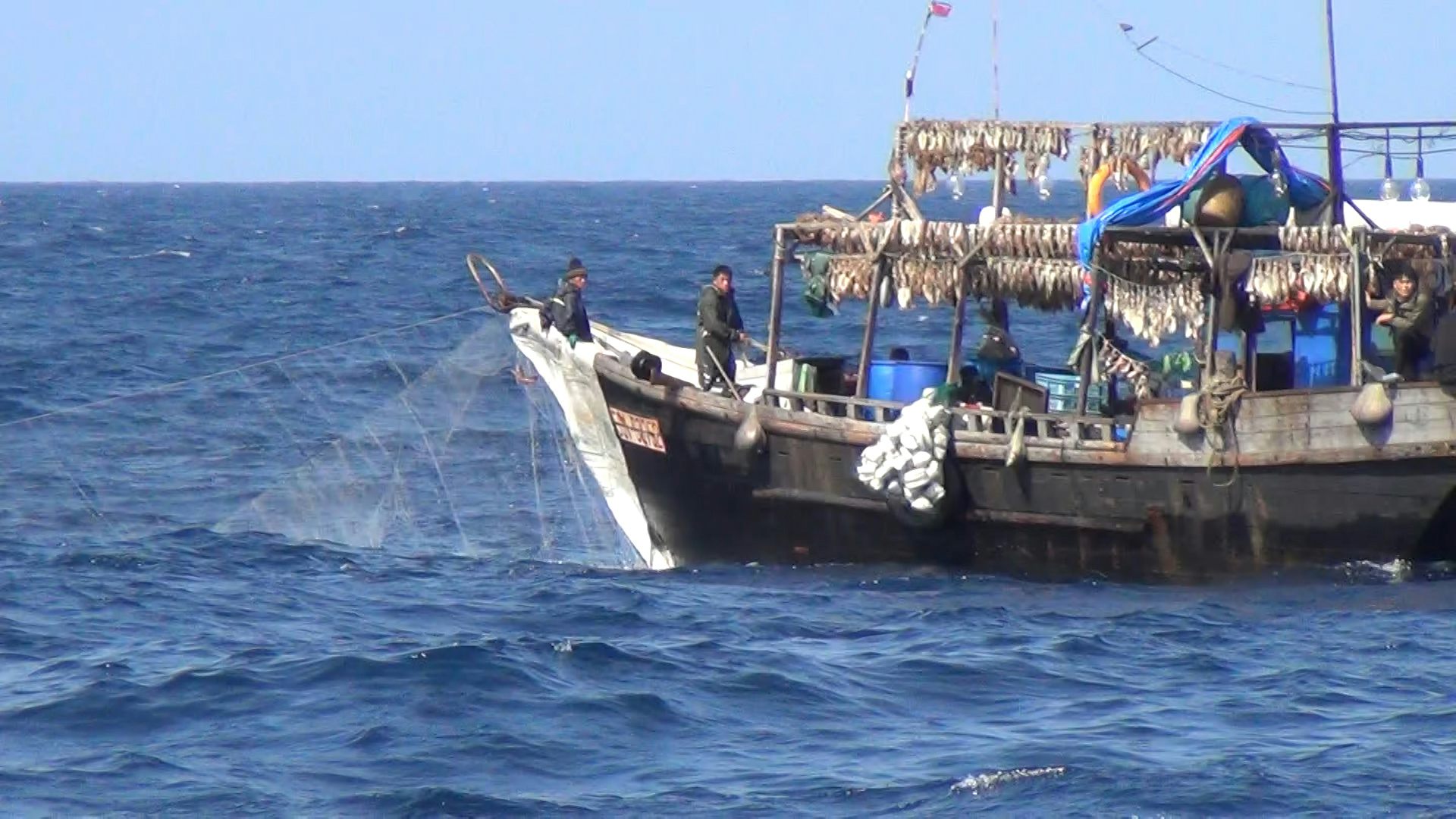
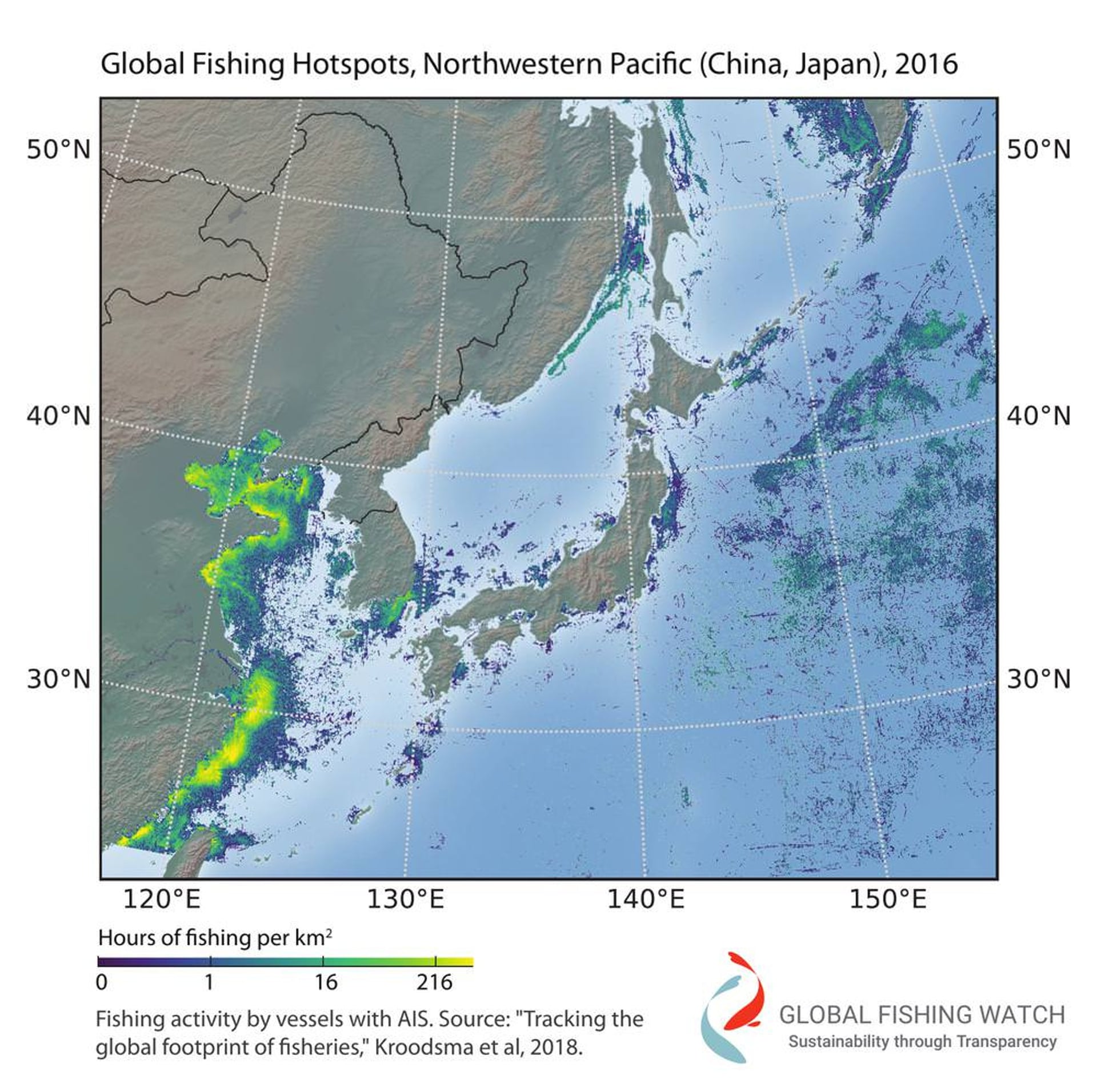
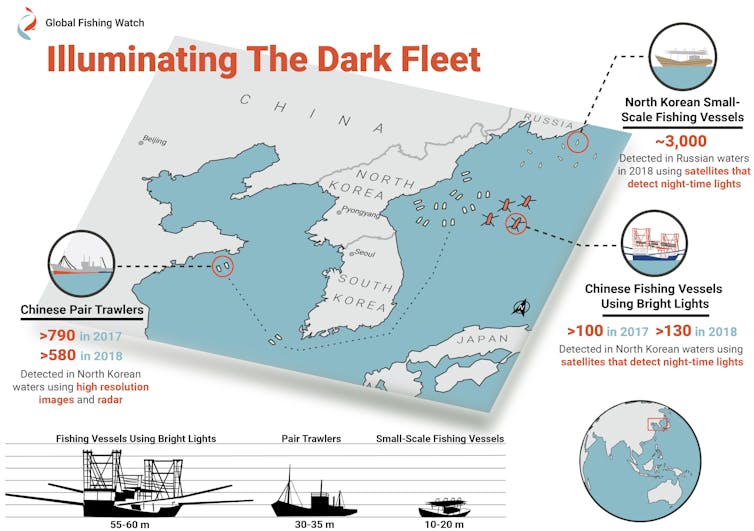
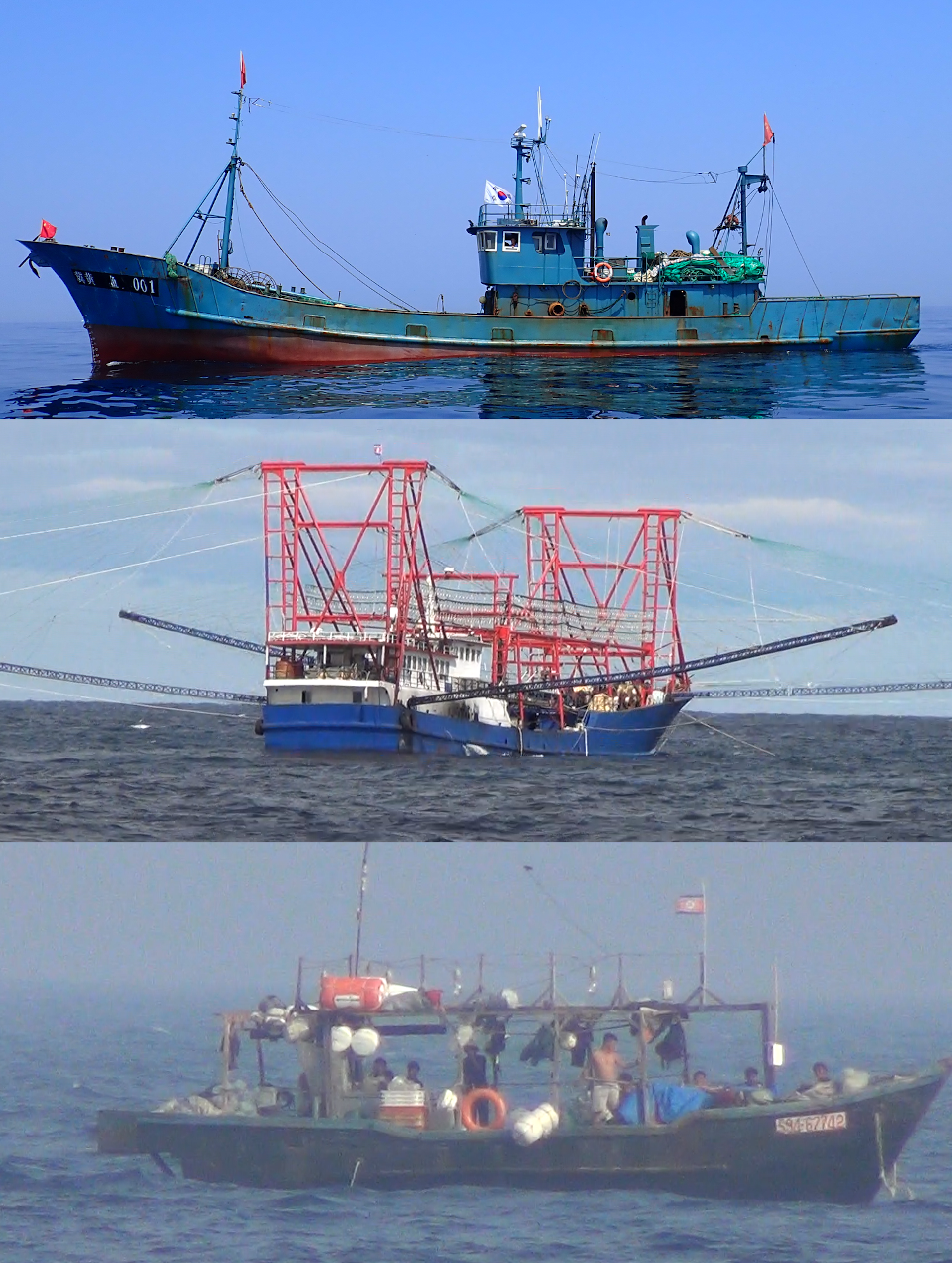
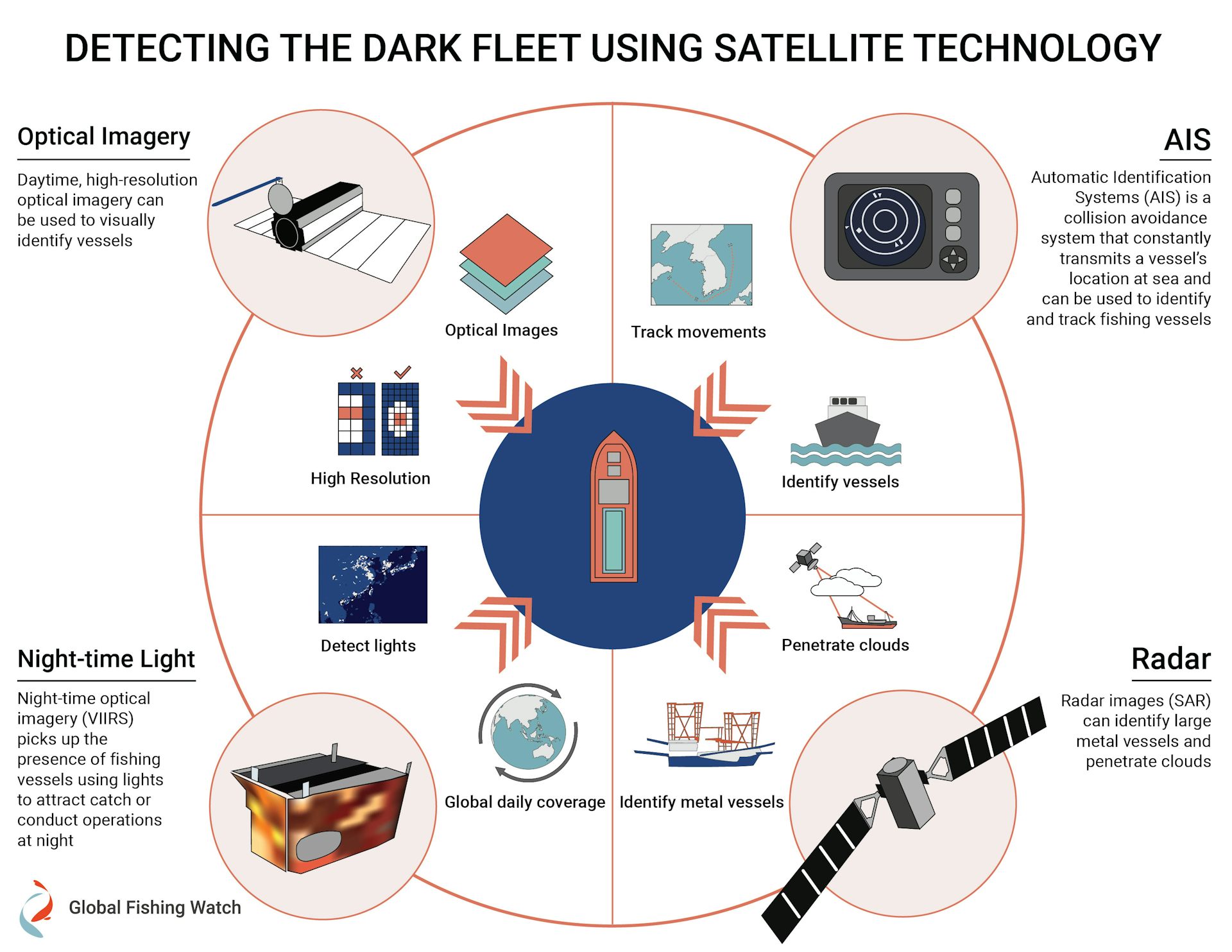
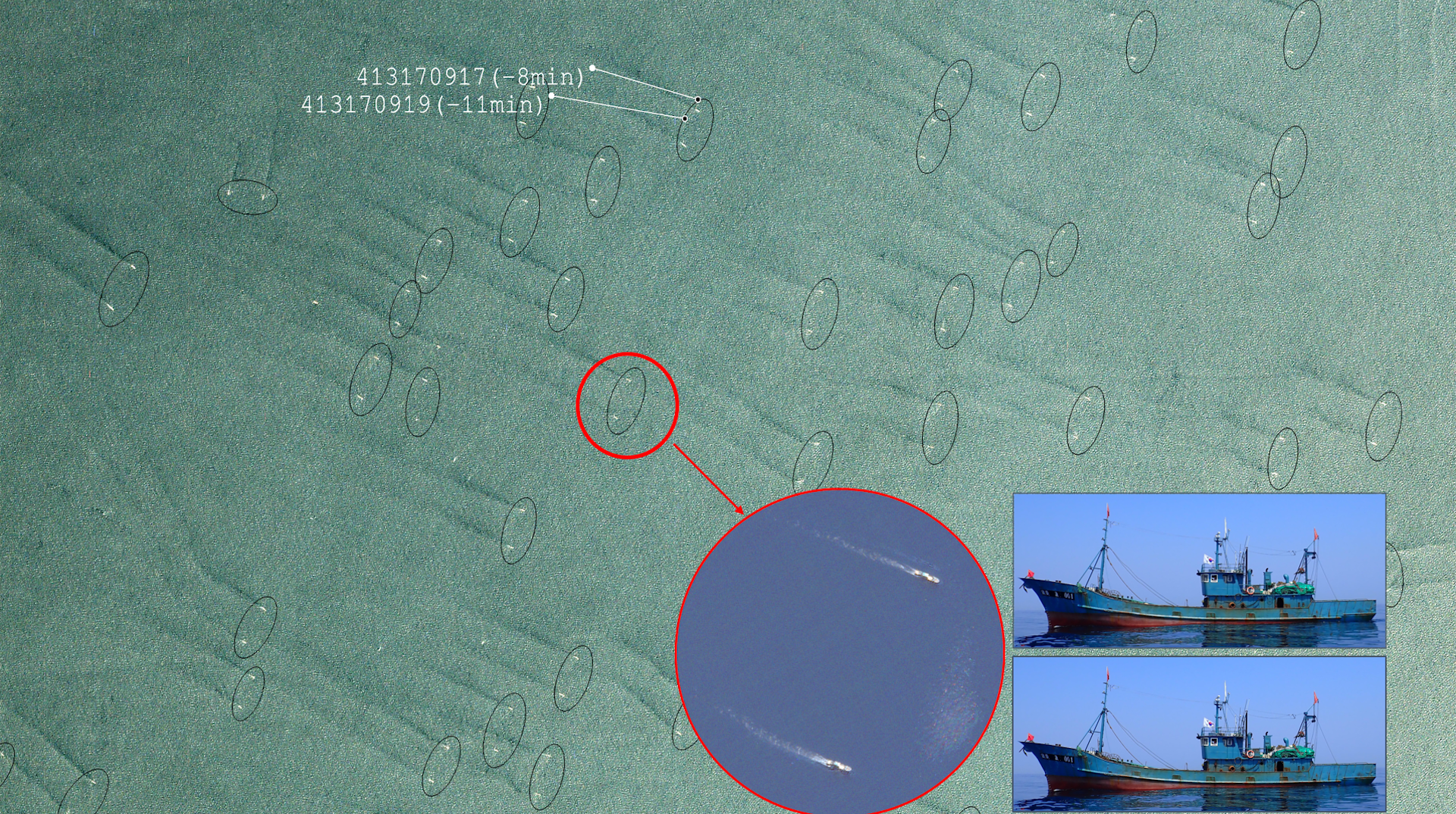
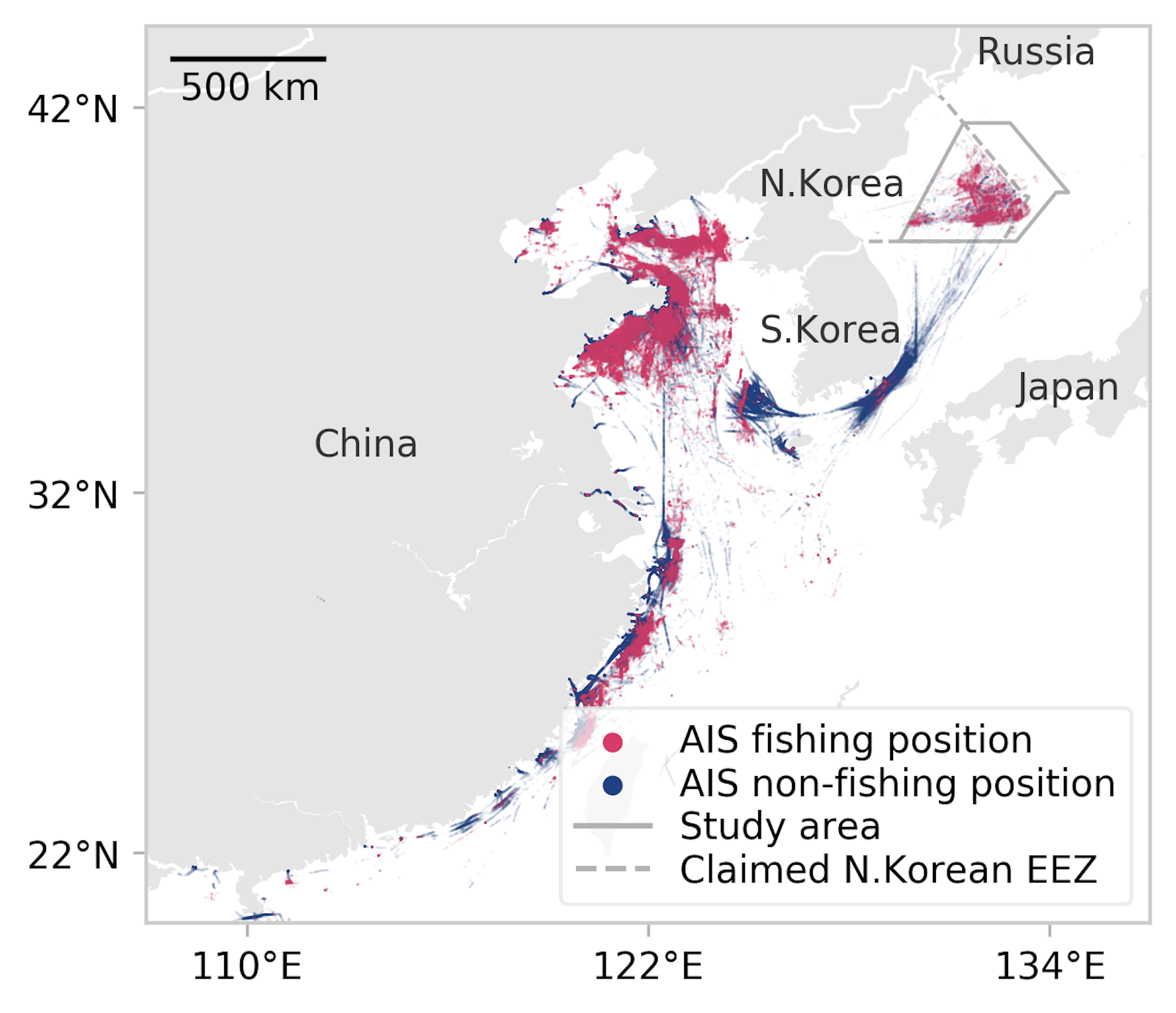

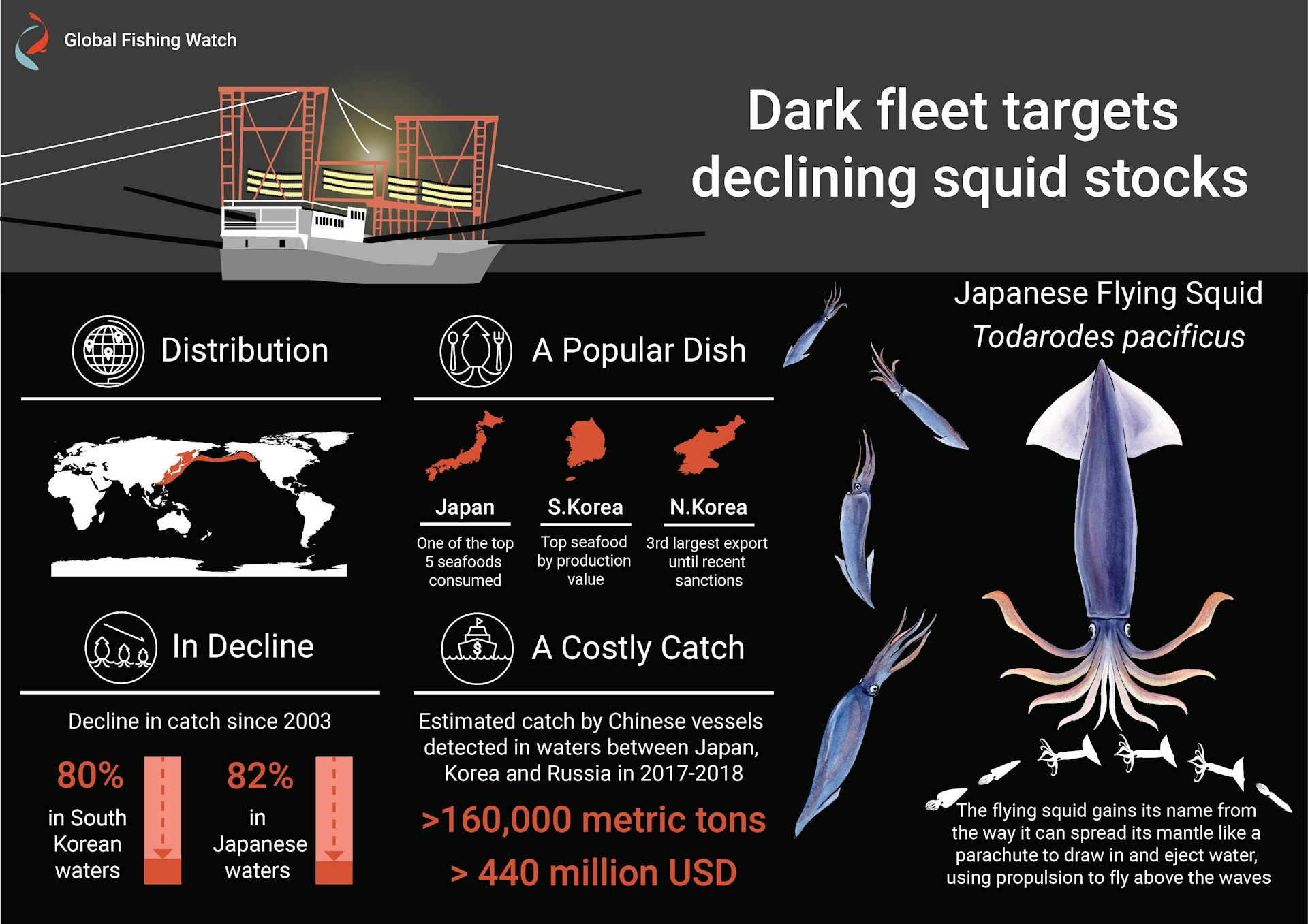

SCMP : China bans squid catch in some overseas waters with overfishing in spotlight
ReplyDeleteThe Guardian : 'They just pull up everything!' Chinese fleet raises fears for Galápagos sea life
ReplyDeleteDW : Chinese fishing near Galapagos Islands raises fears for wildlife
ReplyDeletee360 : How China’s Expanding Fishing Fleet Is Depleting the World’s Oceans
ReplyDelete